Blogging is more than just sharing company news, events, or updates with your users.
When it’s done properly, it can elevate you to thought-leader status and establish your service as the authority in your industry.
By providing your users with valuable and educational content you position yourself as their go-to resource, and with informative, well-written content comes more visitors via Google.
According to Hubspot, companies with active blogs generate 55% more site visits, 97% more links to their websites, and their pages get indexed a whopping 434% more often.
If those stats aren’t enough to convince you, we asked our LinkedIn followers whether the SaaS organizations they worked for leveraged blog content to generate leads, and as you can see below, a whopping 80% answered yes.
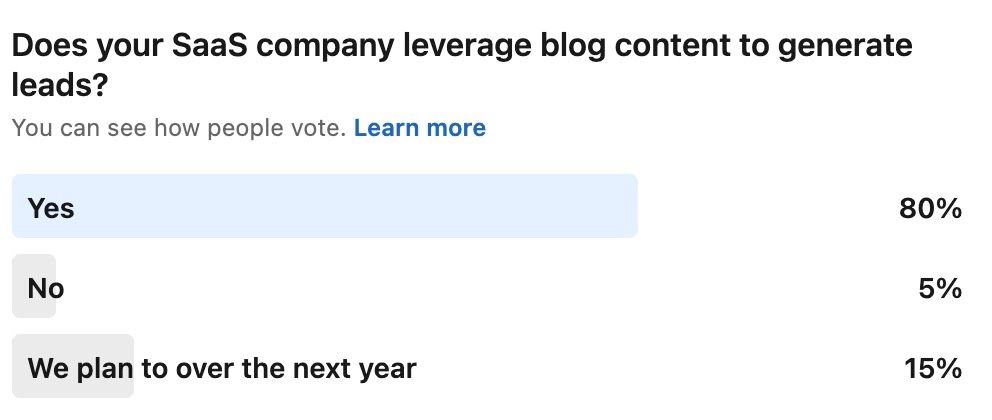
But writing engaging content to draw an audience is just the tip of the iceberg; once you capture their attention you need to capture their information through something we call ‘lead generation’.
In this article, we’ll outline:
- What is lead generation?
- Techniques for generating leads from your blogs
- What is a good lead-to-visit conversion rate?
What is lead generation?
Lead generation is the first step in moving prospects through the buying process.
It’s about attracting customers to your service so they become naturally interested and warm up to you as a brand enough to actually convert to a valued customer.
Once you’ve enticed your prospect to the blog, you need to capture their contact information so you can nurture them and convert them into paying customers further down the line.

Techniques for generating leads
Create actionable content
If you provide your prospects with informative, actionable content you solidify yourself as a trusted resource, and when they have a question or a problem they need to solve your website/blog/service will be where they turn.
Target user’s intent no matter how specific the term or search volume is, user intent is everything when generating leads if your content provides real value users are more likely to take the completed action.
This is also a great way to organically upsell your service or solution.
Avoid the hard sell though and only include tips on how your product can help solve their problem.
Lead magnets
A lead magnet is a document or asset users can download for free in exchange for their information.
It might be a report, like this one below 👇
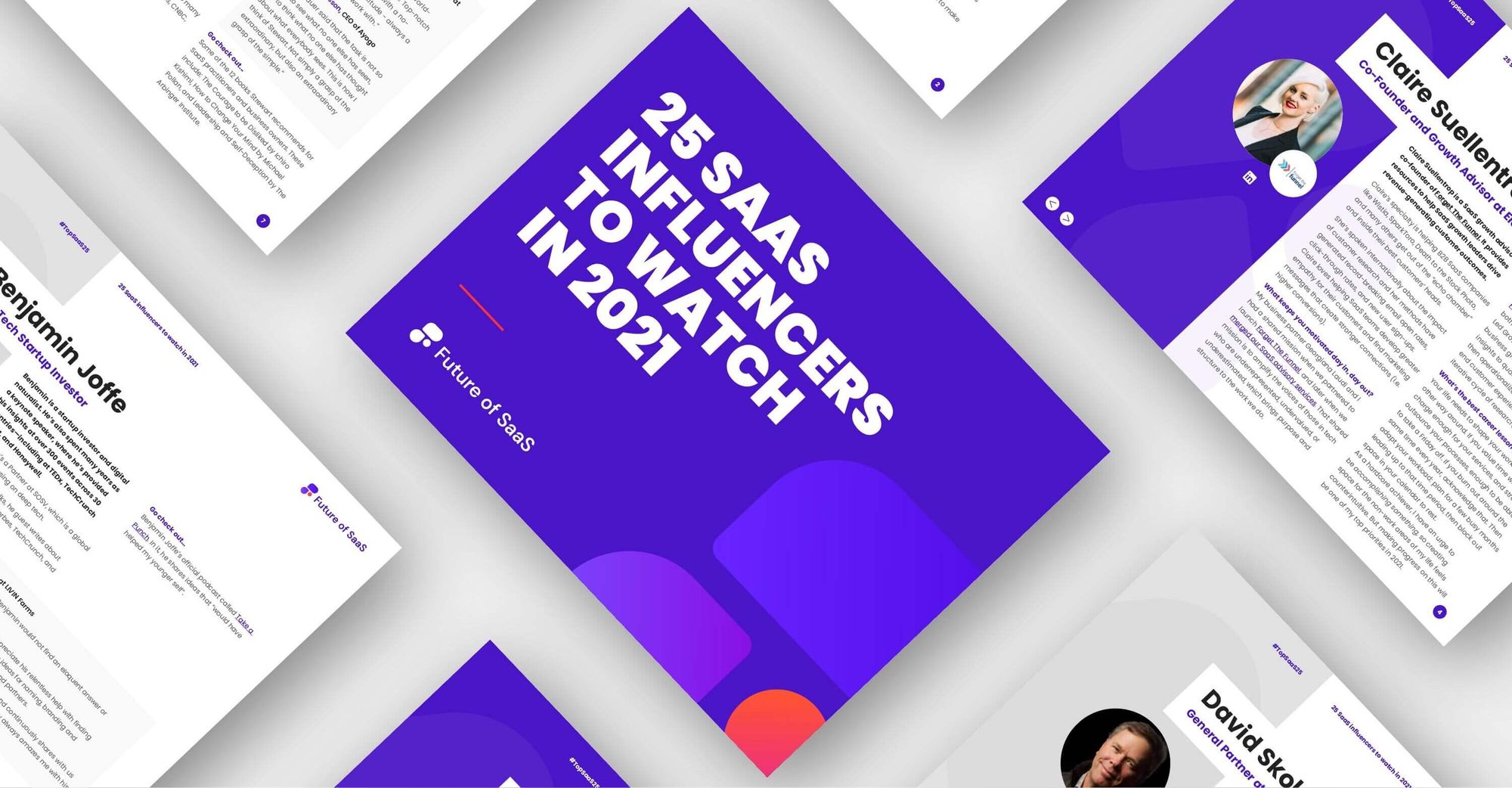
Or an asset your prospects could really use to solve a pain point or help them in their day-to-day life, like the free templates we offer on the site.
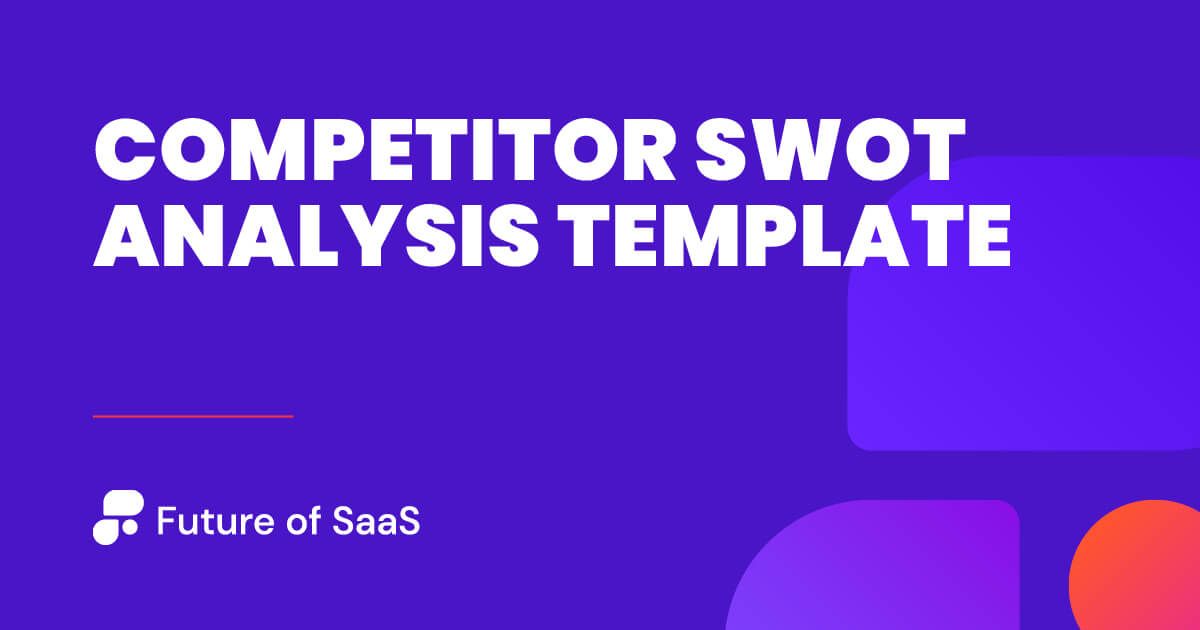
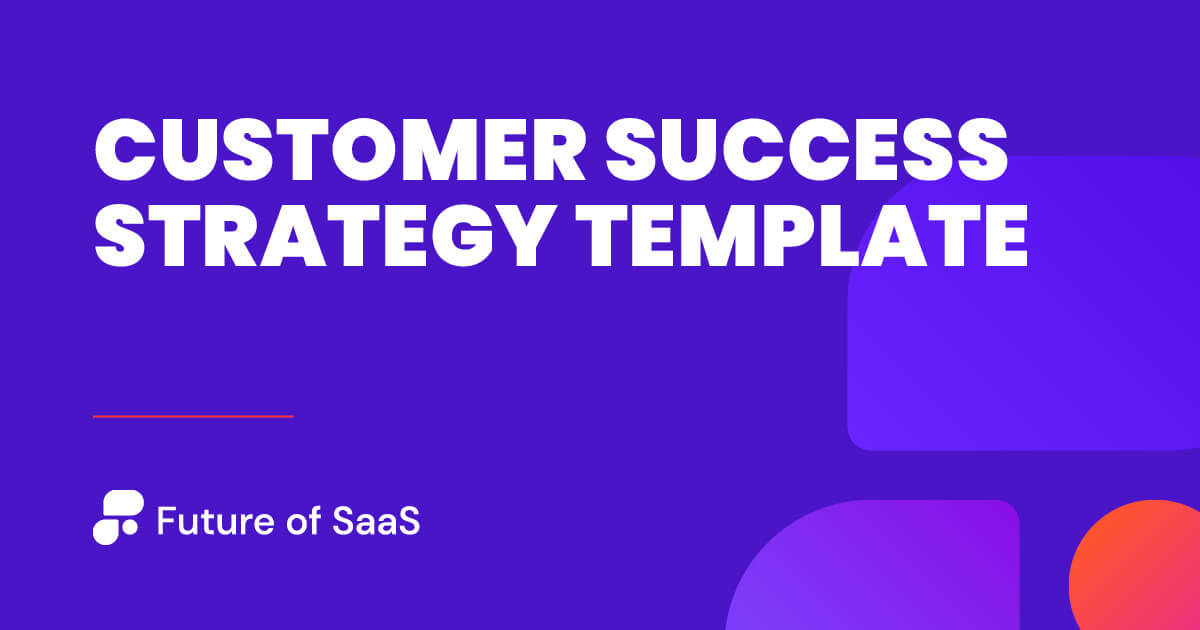
Your lead magnet needs to be directly related to the content on your site and the pain points your service is trying to solve in order for you to be an authority in your industry.
Exclusive content
Creating a content upgrade shouldn’t prevent you from providing valuable free content, but it should be a deeper delve into your chosen subject that goes that extra mile to help out your users.
We have a members area on Future of SaaS where we offer content from industry experts, frameworks, and templates, on-demand video content including event replays, and members-only Q&A’s.
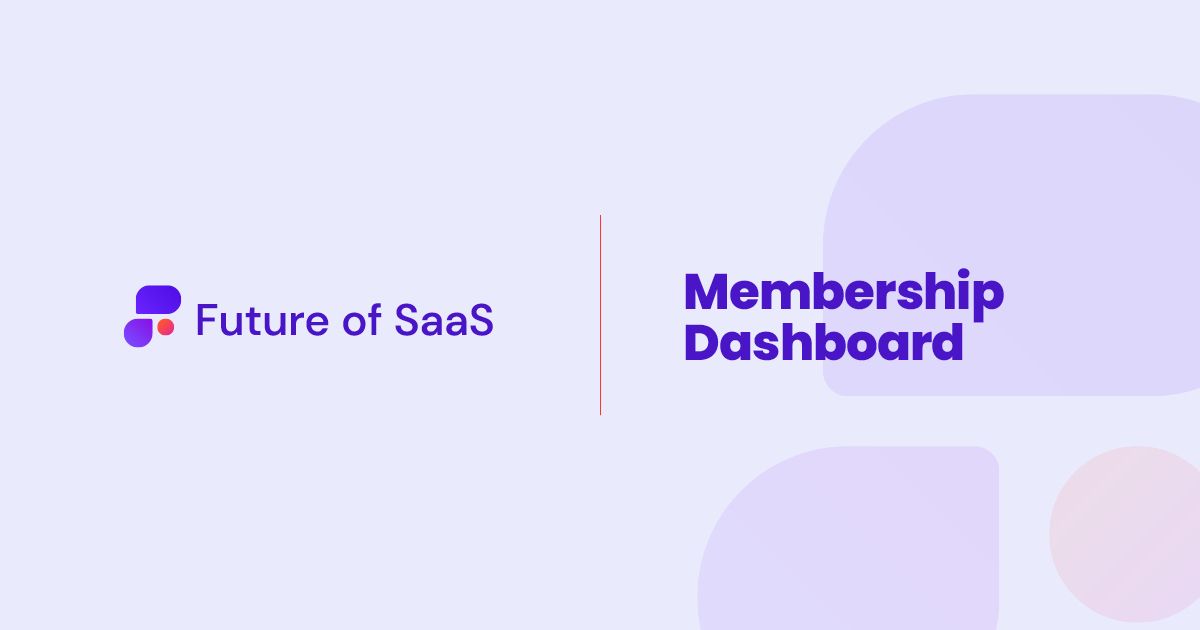
Offer sign-up perks
A great way to generate leads is to offer your prospects exclusive discounts in return for email sign-ups.
An impressive, 42% of B2B organizations say email is one of their most effective lead generators for targeting new clients. (Circle Research), and according to The Social Habit, 70% of people open emails from a familiar brand or company in search of a deal, discount, or coupon.
Make it really easy for your prospects to sign up, and super hard for them to refuse such a good deal. Here’s a perfect example from Kate Spade.
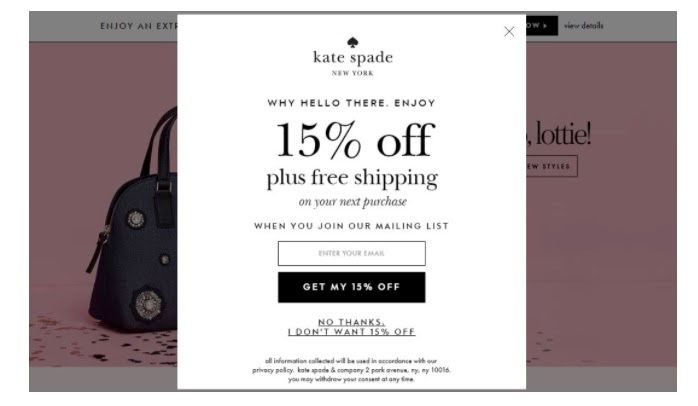
The discount is concise and eye-catching, plus it’s an attractive offer, 15% plus shipping, and the ‘no thanks, I don’t want 15% off’ reiterates how silly you’d be not to take them up on this offer.
Slide-in CTA’s
Slide-in CTA’s are those little boxes that slide in the lower right-hand corner of the blog page, if you’ve ever read a blog post on a website you’ve probably encountered one.
These are a great way to offer your readers valuable (gated) content in order to capture their information. For them to make any kind of sense they must be related to what your audience is already on your blog. So, for example, if they were reading an article about pricing, you could add a slide in to let them know you have a pricing template up for grabs if they enter their email address.
Here’s a great example from Hubspot of slide-in CTA’s in action.
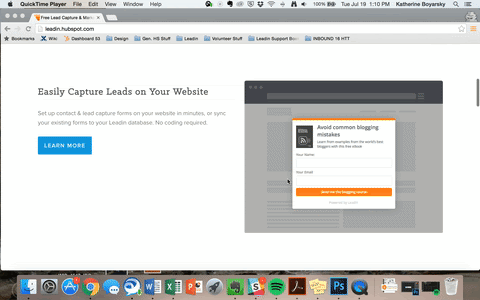
Welcome redirects
When your prospects engage with a particular piece of content, a welcome redirect, directs them to another piece of content they’ll find valuable and hopefully moves them further along the funnel.
Check out this example from optinmonster.
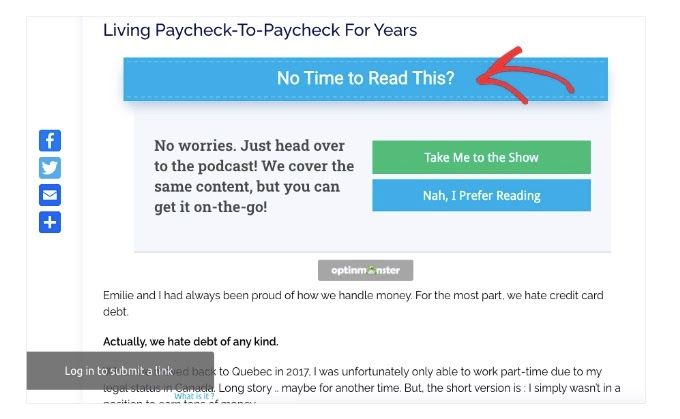
This welcome redirect offers readers an alternative to trawling through a long blog post by offering them all of the same information in a podcast format.
Once your readers take you up on that CTA they’ll be redirected to a lead capture page before they can access the content.
What’s a good lead-to-visit conversion rate?
The thing about conversion rates is that they’re subjective.
Things like industry, product, and target audience affect all of your conversion rates differently.
However, we’ve dug up some ballpark figures to provide a little data you can use as a baseline for OKRs.
According to WordStream and this chart below 👇 the median conversion rate is 2.35%.
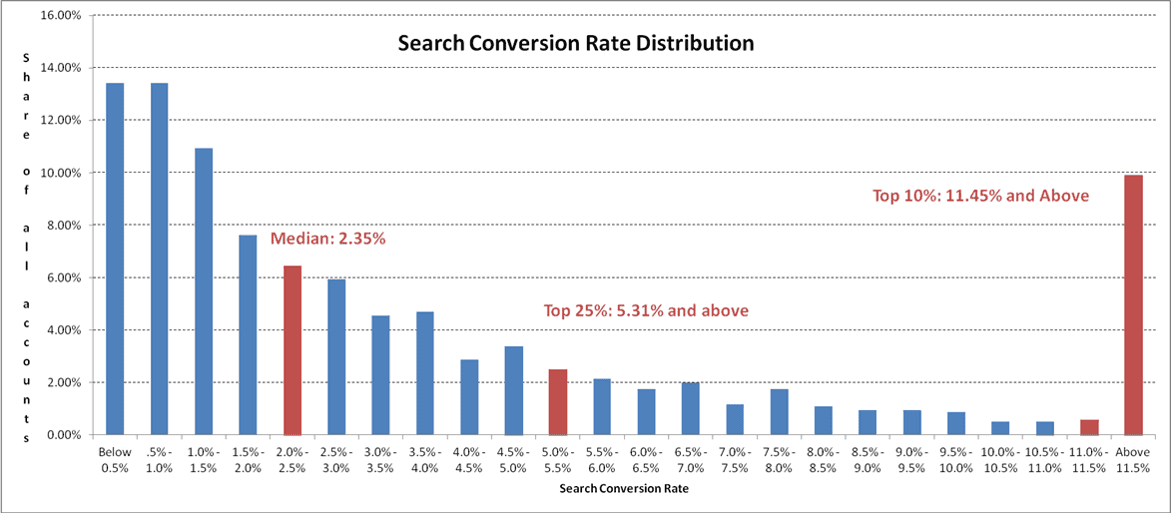
However, the top 25% are converting at 5.31% and above, while the top 10% are converting at a whopping 11.45% and above.
Again these kinds of percentages depend on a number of factors, so we compared them to a study conducted by Marketo.
Marketo looked to their customers to determine the average conversion rate (from lead to opportunity) by acquisition channel and the results were as follows:
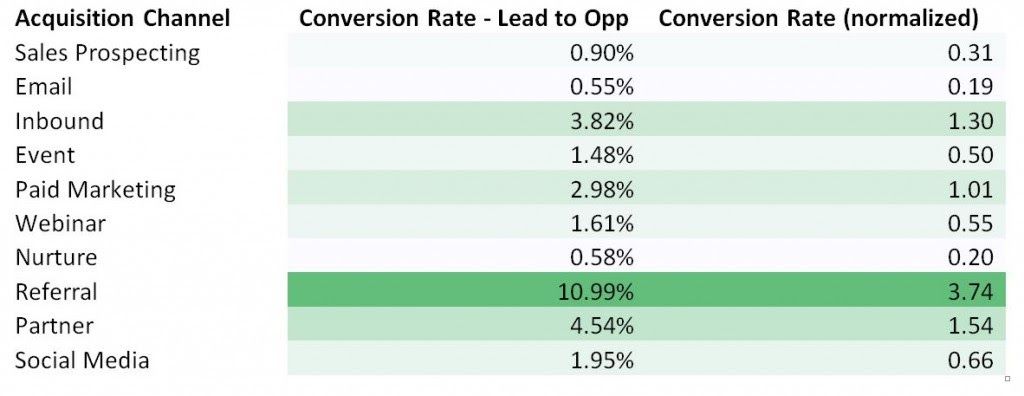
Ignoring the referral results, for now, the second-highest conversion rate was inbound, with 3.82%.
Comparing this with a further study by Unbounce, where they studied the performance of 74.5 million visits to more than 64,000 lead generation landing pages, spanning 10 different industries, the median conversion rate was between 3-5.5%.
So we can safely deduce that the magic number is around a 4% conversion rate.
So in conclusion, content has once again proven it is king, and while 4% is a great percentage to aim for if you’re not quite there with lead conversion, the sky’s always the limit, and the bigger the conversion rate the better the revenue.


